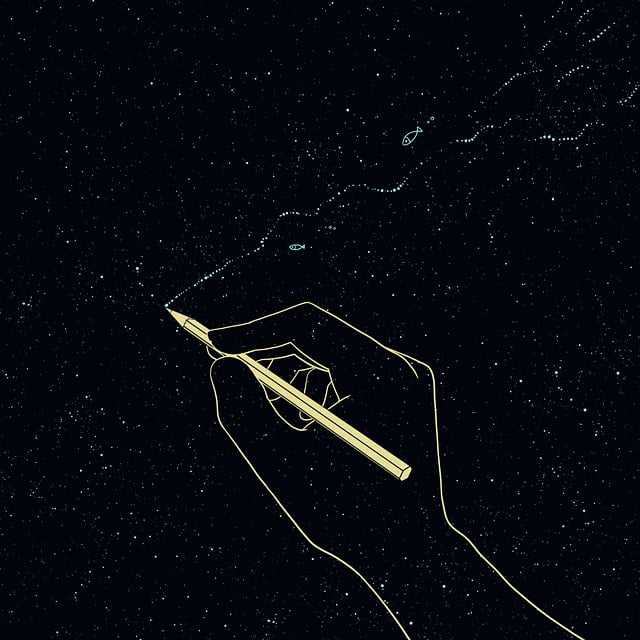Table of Contents
- Exploring the Depths of Abstract Painting Techniques
- Key Color Trends That Define Contemporary Abstract Art
- Cultivating Your Unique Style: Tips for Aspiring Abstract Painters
- Where to Find Inspiration: Influences Behind Abstract Masterpieces
- Q&A
- Insights and Conclusions
Exploring the Depths of Abstract Painting Techniques
Abstract painting invites artists to escape the confines of realism and delve into a world fueled by emotion, color, and form. Each stroke is an expression, a visceral response to the surroundings or an internal landscape. Techniques vary widely, allowing for a rich tapestry of styles that challenge perception. Dripping, for instance, embodies spontaneity, reminiscent of Jackson Pollock’s groundbreaking work, where paint splatters across canvas create a dynamic energy that captivates the viewer.
Another fascinating approach is color field painting, characterized by the use of large expanses of color. Artists like Mark Rothko utilized this method to evoke feelings and provoke thought through simplicity and saturation. The juxtaposition of colors plays a crucial role, creating an emotional dialogue that resonates on a personal level. Artists often experiment with layering techniques to add depth, allowing viewers to interpret the piece from multiple angles.
Beyond these styles, gestural abstraction embraces the act of painting itself as a form of expression. This technique emphasizes movement and brushstroke as an extension of the artist’s emotions. The result is a vivid representation of spontaneity and personal narrative, making each piece a standalone experience. Utilizing tools like palette knives alongside traditional brushes can yield diverse textures and add remarkable intricacy to the artwork.
For artists exploring their own styles, understanding the relationship between technique and emotion is pivotal. Here’s a brief overview of some popular abstract painting techniques:
| Technique | Description |
|---|---|
| Dripping | Dynamic paint application that creates energy through splatters. |
| Color Field | Large areas of color intended to invoke emotional reactions. |
| Gestural Abstraction | Focuses on the artistry of brushstrokes as a form of expression. |
| Layering | Using transparency to build depth and complexity. |
Exploring these techniques not only enhances your skill set but also deepens your understanding of how to convey feelings through art. Each method opens doors to new possibilities and invites both the artist and the spectator to engage in a unique dialogue that transcends written language.


Key Color Trends That Define Contemporary Abstract Art
The world of contemporary abstract art is a vibrant tapestry woven with a diversity of colors that evoke emotion, provoke thought, and redefine boundaries. Artists today are not just utilizing color; they are exploring its potential to create immersive experiences. Living palettes, consisting of bold hues, soft pastels, and unexpected combinations, dominate galleries, inviting viewers to dive deeper into the narrative behind each piece.
Neon Vibrancy: As digital culture proliferates, neon colors are making a vigorous comeback in contemporary abstract art. Artists are harnessing electric pinks, bright greens, and vivid blues to create works that reflect the intensity of modern life. These colors not only stand out but also capture the essence of energy and movement, often translating the frenetic pace of urban environments into visual art.
Monochrome and Minimalism: Contrary to the exuberance of neon, some artists are returning to the roots of minimalism through the use of monochromatic schemes. Utilizing shades of a single color, such as deep indigos or muted earth tones, allows for a focus on texture and form. This restrained approach emphasizes subtlety and invites the viewer to appreciate the intricacies of color variations within a singular hue.
Organic Color Palettes: Inspired by nature, many contemporary abstract artists are leaning toward organic color palettes that mirror the natural world. Earthy tones, sandy beiges, sage greens, and oceanic blues are cleverly blended to evoke a feeling of tranquility and grounding. By incorporating these colors, artworks often create a visual dialogue with the environment, making the viewer feel a part of the broader ecological tapestry.
Table: Key Color Trends
| Color Trend | Description | Emotional Response |
|---|---|---|
| Neon Vibrancy | Electric hues reflecting urban energy | Excitement, Energy |
| Monochrome Minimalism | Single-color emphasis for subtlety | Calm, Reflection |
| Organic Palettes | Earthy tones inspired by nature | Tranquility, Connection |
These evolving color trends underline the dynamic nature of contemporary abstract art. By examining these palettes, we not only appreciate the aesthetic qualities but also the emotional resonances that each artwork embodies, completing the full circle of artistic expression in today’s world.


Cultivating Your Unique Style: Tips for Aspiring Abstract Painters
Embracing your individuality is crucial for any artist, especially for those navigating the vibrant world of abstract painting. Begin by immersing yourself in various artistic influences. Study the works of renowned abstract painters and explore diverse art movements—from Expressionism to Color Field painting. Create a vision board where you can pin visual elements that resonate with you, including colors, shapes, and styles. This practice will help solidify your preferences and inspire original ideas.
Experimentation is key in the development of your unique style. Allow yourself to play with different materials and techniques. Whether it’s using unconventional tools like spatulas or household items to apply paint, or integrating mixed media such as fabric and photography, each element can contribute to your signature approach. Keep a journal to document your paintings, recording your thoughts, emotions, and techniques. This reflective practice can reveal patterns and insights about your artistic inclinations.
Seek constructive feedback from fellow artists and art enthusiasts. Join workshops or online communities tailored to abstract painting, where you can share your work and gain fresh perspectives. Engaging with others helps you refine your style, uncovering aspects you might not have considered. Consider developing a regular critique schedule where you can present your work and receive input, either through a local art group or digital platforms.
Lastly, cultivate your brand identity as an artist. Think about how you want to present your work to the world—this includes not just your painting style but also your overall aesthetic, from social media presence to the layout of your portfolio. Use consistent imagery, color palettes, and themes across your platforms. Here’s a simple table to consider the various elements that contribute to your artistic brand:
| Element | Considerations |
|---|---|
| Color Palette | Choose a set of colors that resonate deeply with your artistic vision. |
| Signature Techniques | Identify unique tools or methods that define your painting style. |
| Online Presence | Develop a cohesive look for your website and social media profiles. |
| Art Subject Matter | Focus on themes that matter most to you and repeat them in your work. |


Where to Find Inspiration: Influences Behind Abstract Masterpieces
For artists venturing into the world of abstraction, inspiration can often be drawn from a multitude of sources. Nature, with its vibrant colors and unpredictable forms, remains a timeless muse. The fluidity of water, the texture of bark, and the fleeting shadows cast by leaves can spark creative ideas. Whether through a relaxing walk in a park or a hike through mountainous terrain, observing the complexity and simplicity of the natural world can ignite a passion for expressing these elements on canvas.
Another rich vein of inspiration lies in human emotions and experiences. Abstract artists often capture feelings that are difficult to articulate, translating joy, sorrow, anger, and serenity into visual forms. The movement of the brushstroke, the clash of colors, and the orchestration of shapes can all echo the tumult of human existence. Consider reflecting on personal narratives or current societal issues as fuel for creativity. Journaling about these emotions can also help crystallize the themes to explore in artwork.
Additionally, a wealth of artistic styles and movements has paved the way for modern abstraction. Influences such as Cubism, Surrealism, and the Color Field Movement can serve as reference points. Engaging deeply with the works of pioneering artists like Pablo Picasso, Wassily Kandinsky, or Mark Rothko opens new avenues for exploration. Analyzing the techniques and concepts employed in their masterpieces provides practical learning while offering perspective on how to break the boundaries of conventional art.
visiting galleries, attending exhibitions, or even connecting with fellow artists can catalyze inspiration. Discussions and exchanges with other creatives can challenge perspectives, revealing new techniques or concepts worth exploring. Local art communities often host workshops or collaborative projects that inspire fresh ideas. Joining these networks not only nurtures your artistic journey but can also lead to meaningful insights that fuel your abstract endeavors.
